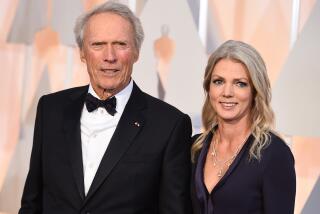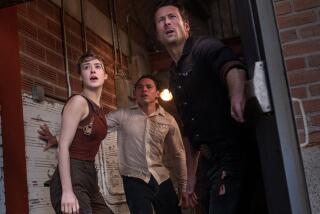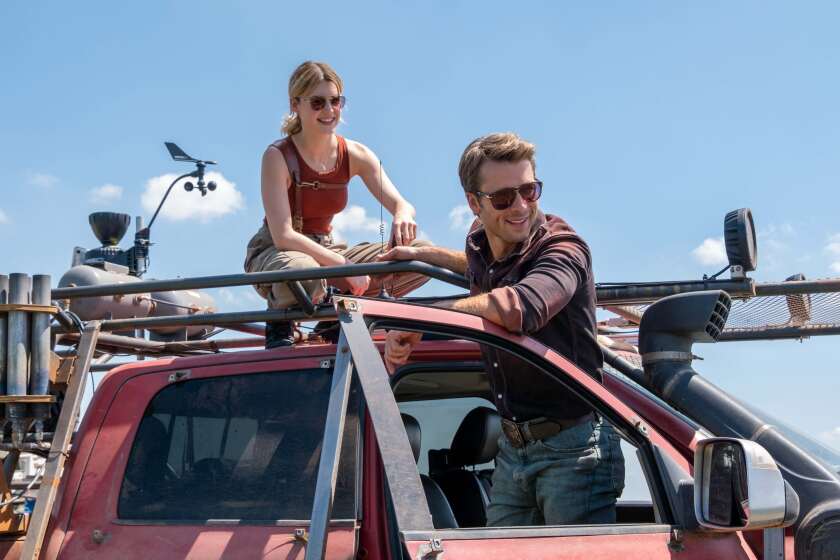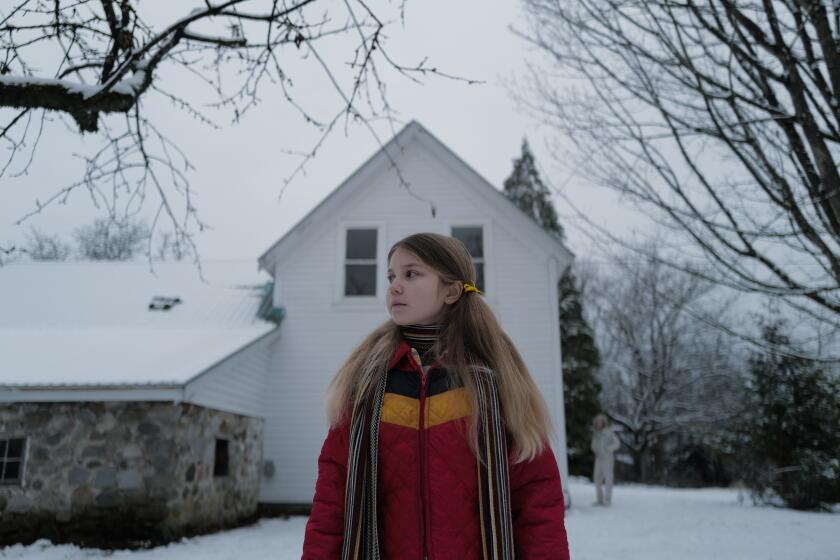His life began at 40
REMY, c’est moi?
It’s hard not to think that when meeting Brad Bird, “Ratatouille’s” writer-director. He thoroughly identifies with his rat protagonist Remy, who yearns to be a chef in the heretofore unwelcoming kitchen of the legendary French restaurant Gusteau. Remy, an unsung artist with a sensational sense of smell, is a misfit in his tribe of rats. Before a gun-wielding grandma dislodged his rat community from its bucolic perch in the French countryside, Remy’s father had consigned him to a life of sniffing out poison.
Bird was one of Hollywood’s unsung talents until his 40s, a guy who impressed the likes of Pixar kingpin John Lasseter, Steven Spielberg and Simpsons creator Matt Groenig, but still toiled in relative anonymity.
His relative under-appreciation goes all the way back to his childhood in Oregon, when he’d trot home from school every day and spend hours holed up drawing. At 3, he drew Boinky -- a boxy rabbit -- in sequential pictures. At 11, he began drawing animation in earnest, and at 14, he completed his first film, a topsy-turvy version of “The Tortoise and the Hare,” in which the slow and steady tortoise is the villain trying to subvert the speedy hare.
Nonetheless, his junior high guidance counselor tried to talk him out of a life in the movies. He asked Bird over and over again, “What do you want to do with your life?”
“I said, ‘I want to make movies,’ ” recalls Bird. “We had a half-hour discussion where he kept trying to get me to say what else I would be interested in doing. He’d say, ‘If movies didn’t exist, what would you do?’ And I’d say, ‘I’d have to invent them.’ ”
Bird tells the story the way a veteran animator would: with all the appropriate voices. He’s stern as the evil counselor, guileless as his teenage self. He returns to his present self for the moral: “That, in a nutshell, is the message sent to a lot of people who want to have a career in the arts. It’s considered impractical, a far-fetched thing. To have a goal, something that excites you, that everybody else thinks is crazy -- I relate to that.”
Bird is sitting in a hotel lounge in Westwood a couple of hours before “Ratatouille” sweeps the Annies, animation’s top award. He looks like a Little Rascal gone middle-aged, with reddish hair, freckles and an impish grin -- along with the thickening midriff of a soccer dad. His youthful chutzpah has matured into a zesty confidence. And why not? In 2005, Bird won a best animated feature Oscar for “The Incredibles,” for which he was also nominated in the screenplay category, and this year, he’s received the same nominations for “Ratatouille.”
While Hollywood mints “star” directors from every video helmer who churns out a hit, animation, the billion-dollar war horse, remains largely a starless fiefdom, where the public barely knows who’s responsible for such cultural icons as Shrek or Nemo.
One exception is Pixar’s creative kingpin John Lasseter, who also directed “Toy Story” and “Cars.” The other is Bird, the business’ fast-rising auteur -- who’s somehow managed to imprint his distinctly personal stamp on the CG world through the dazzlingly precise and cinematic verve of his animation as well as his idiosyncratic sense of humor and unusual ability to imbue mere drawings with vibrant personalities.
Bird writes his own material, and the voices in “Ratatouille” are enhancements, not crutches. Furthermore, the story is largely told from the perspective of a small rat -- it’s as if a camera is attached to Remy’s collar as he scampers through Gusteau’s kitchen, perennially threatened by flying knives, simmering saucepans and maniacal chefs. As Remy is seduced by the kitchen, the palette of Gusteau’s kingdom becomes softer, inviting, irresistible.
And Bird is fast. There are sequences in his films that literally move faster than almost any other studio-scale animation. He’s also fast in another way. Despite his deep identification with Remy, “Ratatouille” was not in fact Bird’s idea, but that of co-director Jan Pinkava, who had been working on “Ratatouille” since at least 2000.
When the movie stalled, Bird was asked to take it over -- and was able to completely retool the script and finish the project within a year and a half, not the four years it usually takes to make an animated film.
For Dick Cook, chairman of Walt Disney Studios, which bought Pixar in 2006, Bird was like the Lone Ranger riding in. “Brad Bird is singularly one of the finest and rarest filmmakers working today,” Cook says. “This guy writes, he directs, he does everything. He’s incredibly smart and it shows up in all of his work.”
Learning from the best
Bird began his professional apprenticeship early. Still a teenager, he sent his cinematic retelling of “The Tortoise and the Hare” to Disney, where it ended up at the animation department still run by the nine grand old men who’d created such classics as “Snow White.” Bird wound up spending every vacation flying to Los Angeles to study with Milt Kahl, revered as the finest draftsman of the Disney animators.
At CalArts, he befriended other budding animators such as Lasseter and Tim Burton and studied Disney greats like “Dumbo” frame by frame. He worked briefly at Disney, then directed an animated episode of Steven Spielberg’s “Amazing Stories” and wound up on the crew of “The Simpsons.”
There were many opportunities to direct, but all foundered at the finish line until the 1999 animated film “Iron Giant,” based on a book by poet Ted Hughes. Set amid the Cold War paranoia of the 1950s, the hand-drawn film tells of a lonely boy who befriends an enormous iron robot who’s fallen from space. “The Iron Giant” received great reviews but flopped commercially, and after years of ignoring his pal Lasseter’s entreaties, Bird moved to Pixar.
Today, he seems less a techno-nerd entranced by CG animation for its own sake than a storyteller who can use the medium -- almost any film medium -- for maximum storytelling ability.
When tackling “Ratatouille,” one of Bird’s first insights was to embrace the “ick factor” inherent in the story of a rat infiltrating a four-star kitchen. The previous “Ratatouille” team had tried to finesse this by making the rats more human, but Bird wanted them to embrace Remy’s outer -- and inner -- rodent.
“You can buy the fantasy of a rat wanting to cook if there are moments when he feels like a real rat,” Bird explains. “We studied a lot of footage of real rats. We saw that they lead with their noses because their eyesight isn’t the greatest. We showed that particularly on Remy. We thought it was good for someone primarily concerned with the senses to be led by his nose.”
Before Bird’s arrival, all the rats had walked on two feet like humans, but Bird decided to “re-rig them to be on all fours.” Indeed in the film, when Remy’s brother asks him why he’s suddenly walking upright, the rat-artist explains that a chef needs to keep his hands clean. Remy’s posture becomes a barometer of the character’s inner life.
“If he feels exuberant, he tends to be more upright, and his hands pulled back “ says Bird, “Later on, when he feels shame in front of his father, and [his dreams] have all turned into disaster, he folds back in again. It’s not just a mannerism. It’s a thing that helps tell the story.”
“There are a million decisions like that in the course of making a film,” adds Bird -- though perhaps there will be fewer in the future. His next project, “1906,” is a live-action drama set in the San Francisco earthquake of that year. “I’m just resuming what I was doing before [‘Ratatouille,’]” he says. “I love film. I have as many live-action projects that didn’t get made as animated projects that didn’t get made. I’m not one of these people who can’t wait to get out of animation into ‘real filmmaking.’ ”
Like many animators, he’s slightly touchy about the medium getting the respect he feels it deserves. “If you were to ask me if I think ‘Snow White’ was one of the best films of 1937, yes I do. I think it was nice that it got a cute little Oscar with seven little Oscars. I think it should maybe have been nominated for a real one.”
Does he think that animation should now be included in the best picture category?
Bird demurs. This happens to be his year, and he’ll be donning a tux and leading the “Ratatouille” team at the Academy Awards.
“I can’t answer that,” he says with a chuckle. “That’s like asking me if I like my own kid. Ask me in year when I was not nominated and I’ll tell you.”
--
More to Read
Only good movies
Get the Indie Focus newsletter, Mark Olsen's weekly guide to the world of cinema.
You may occasionally receive promotional content from the Los Angeles Times.






